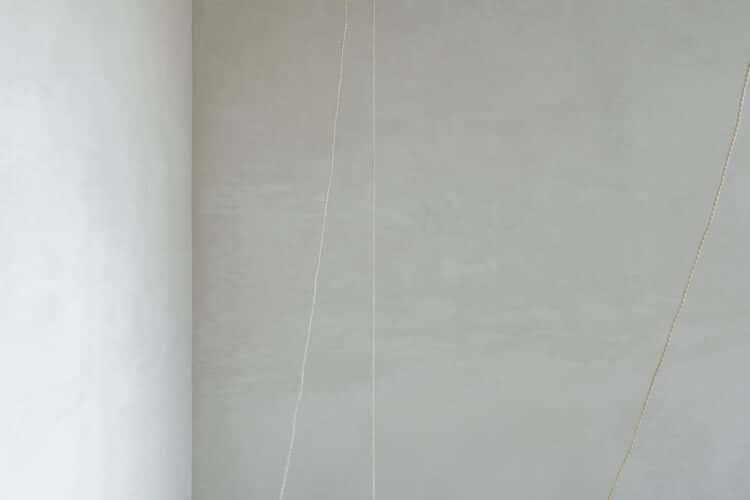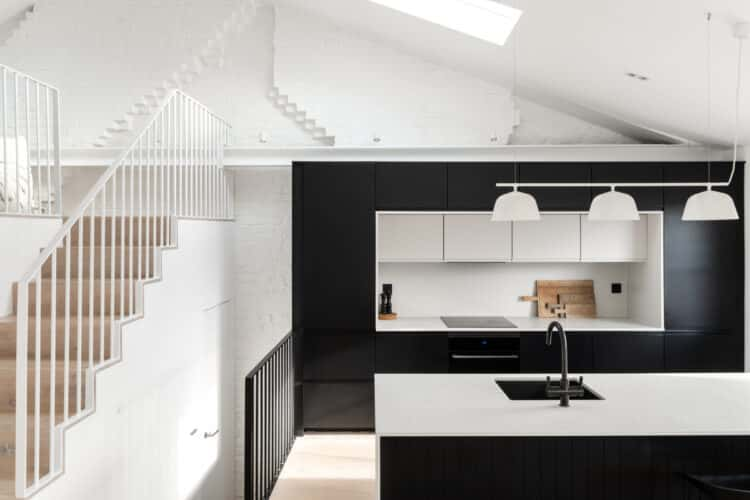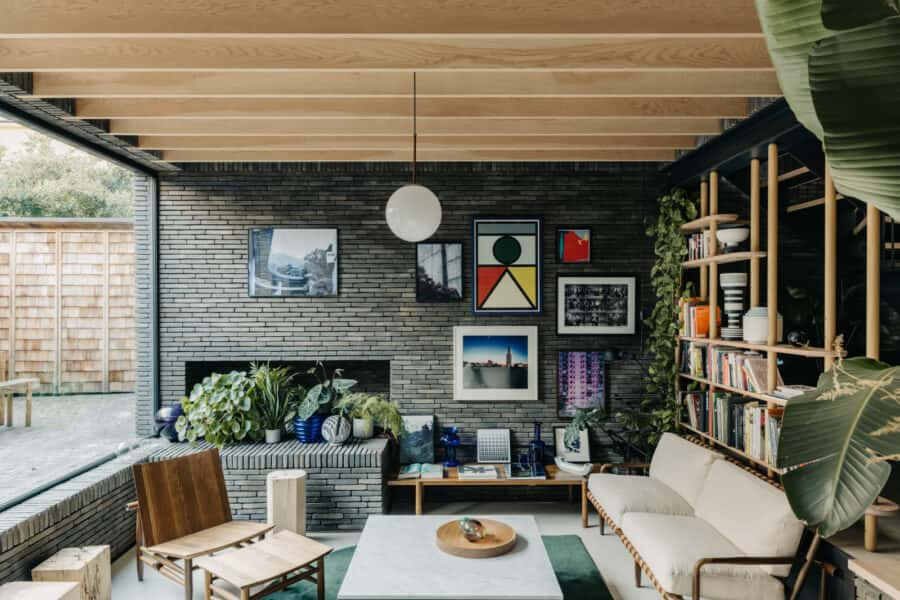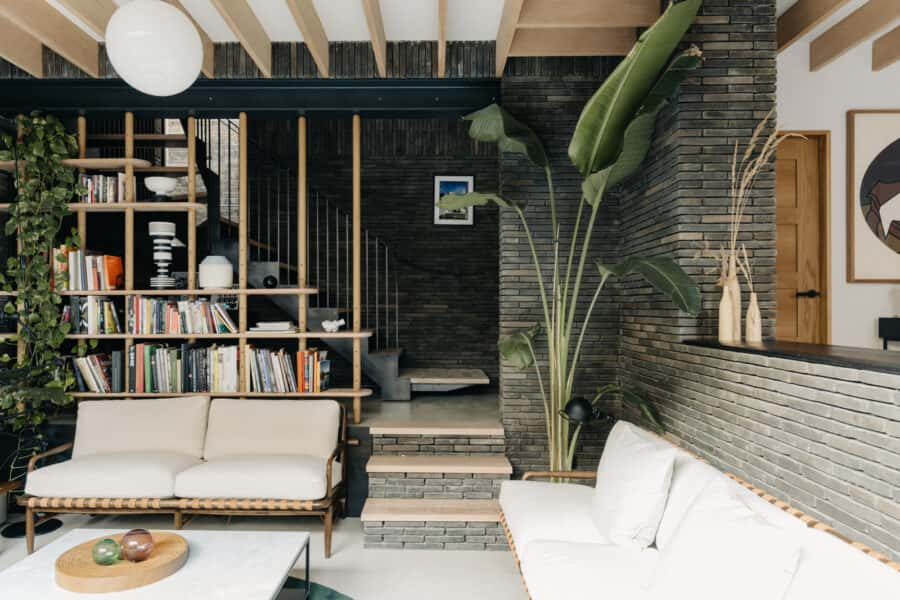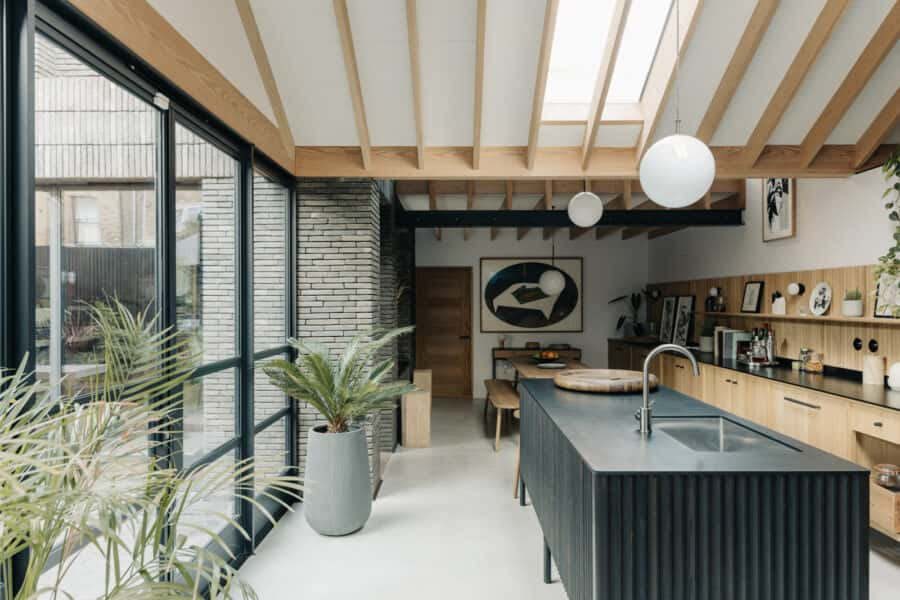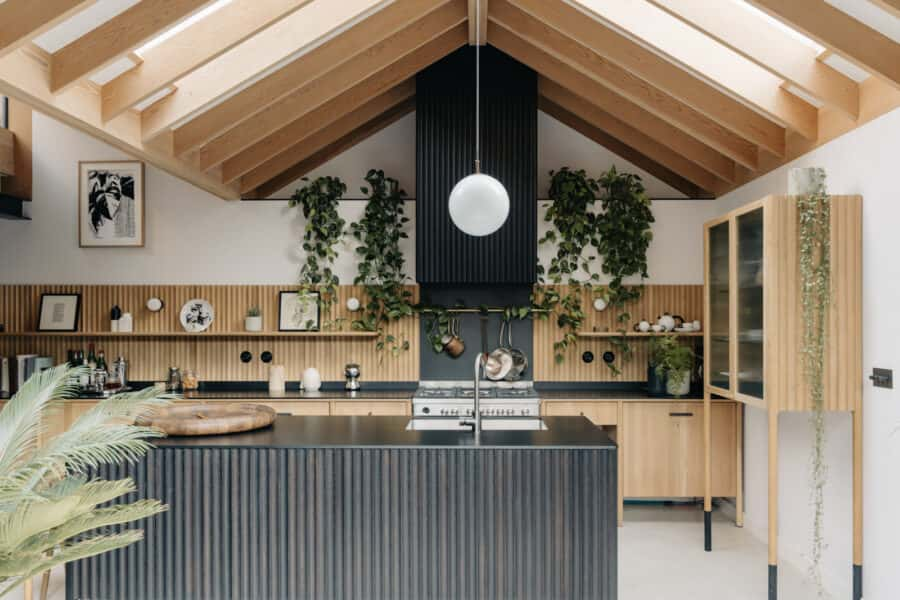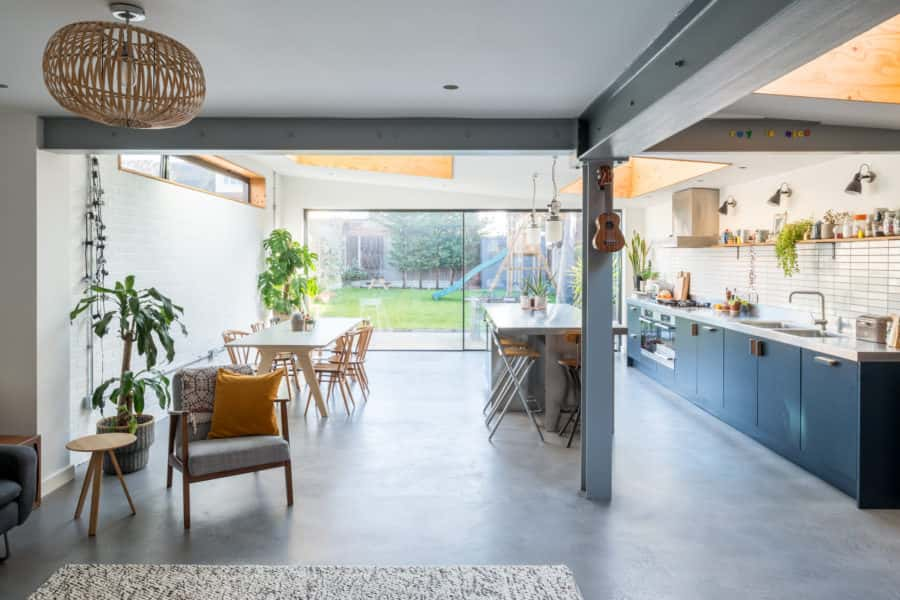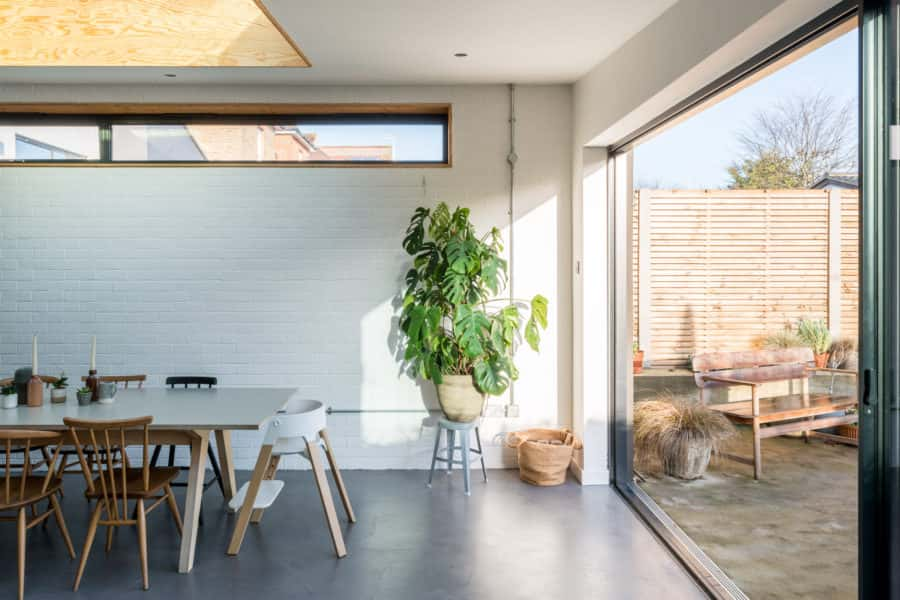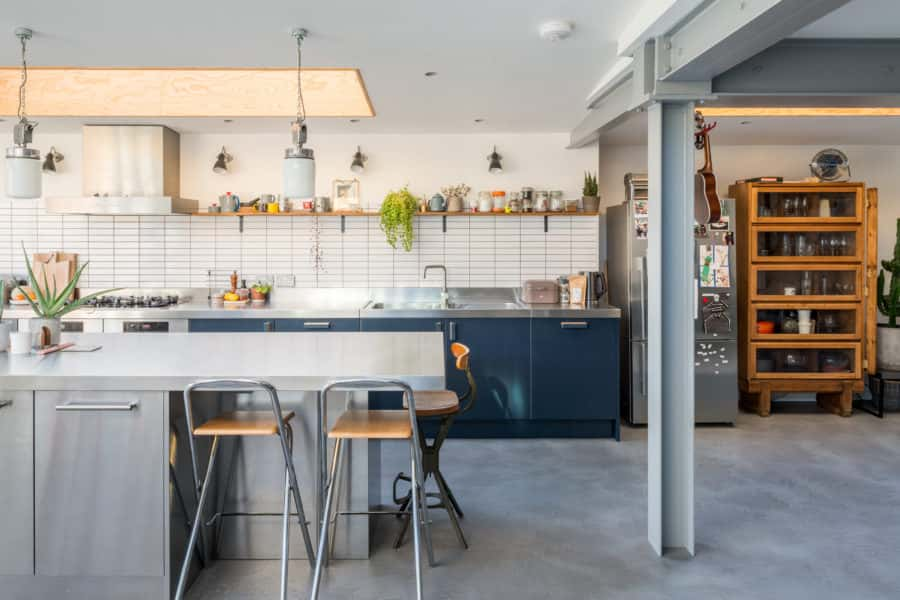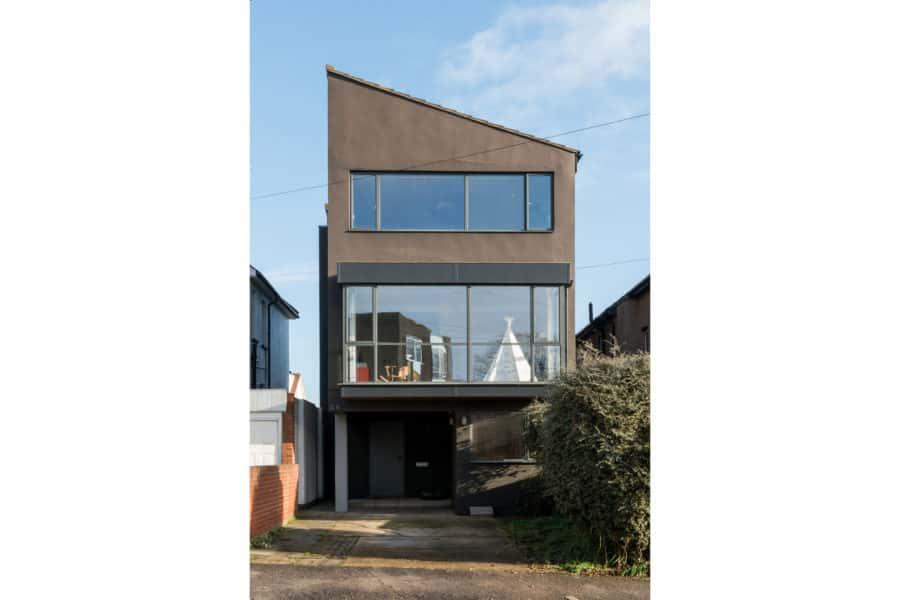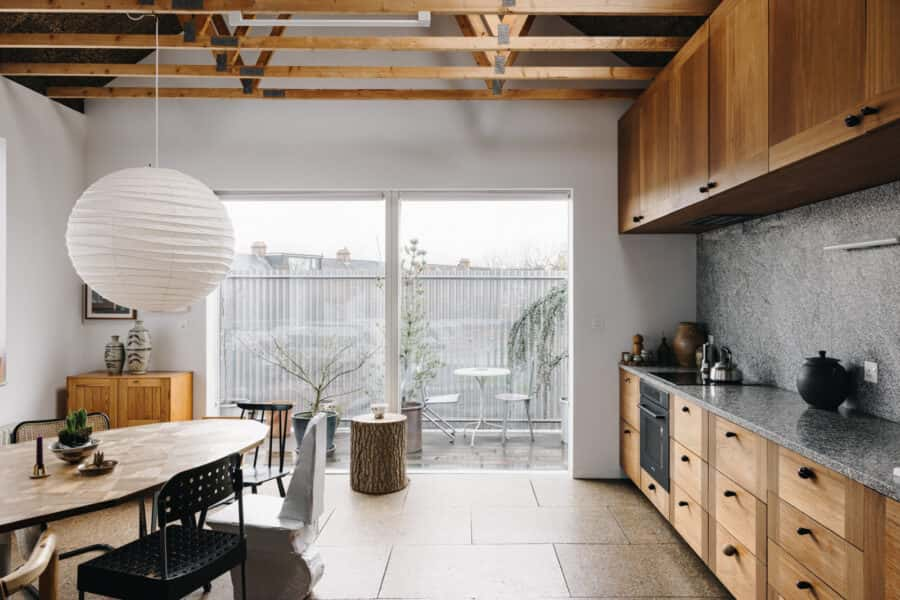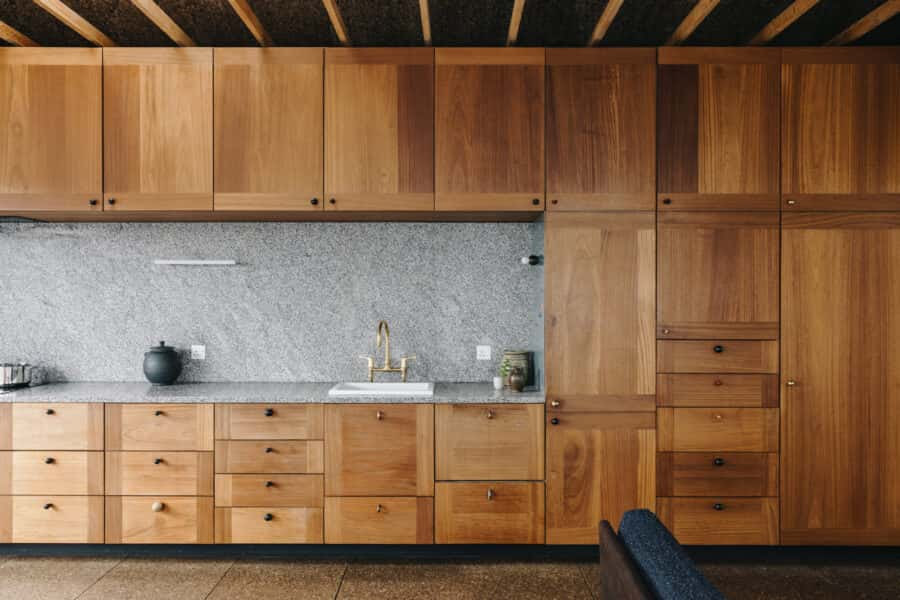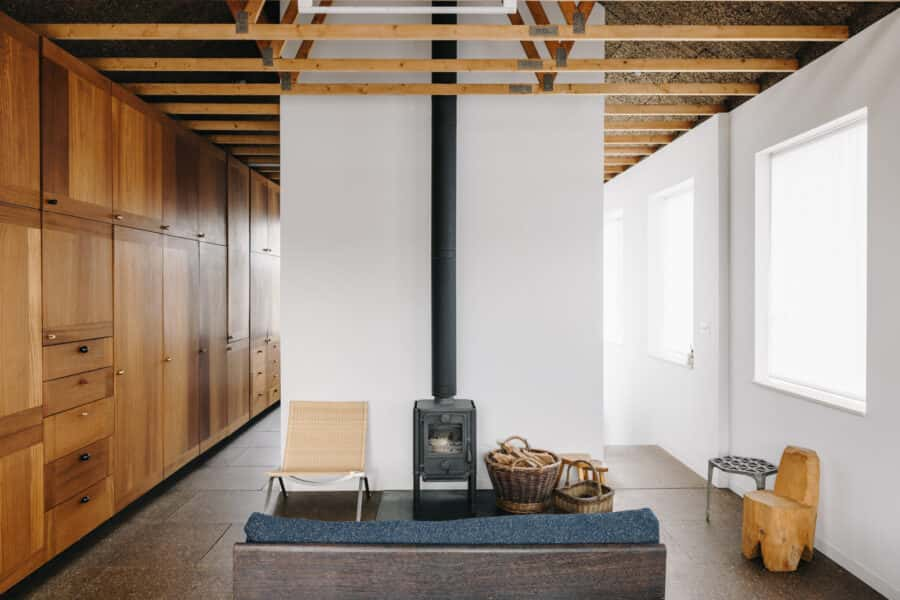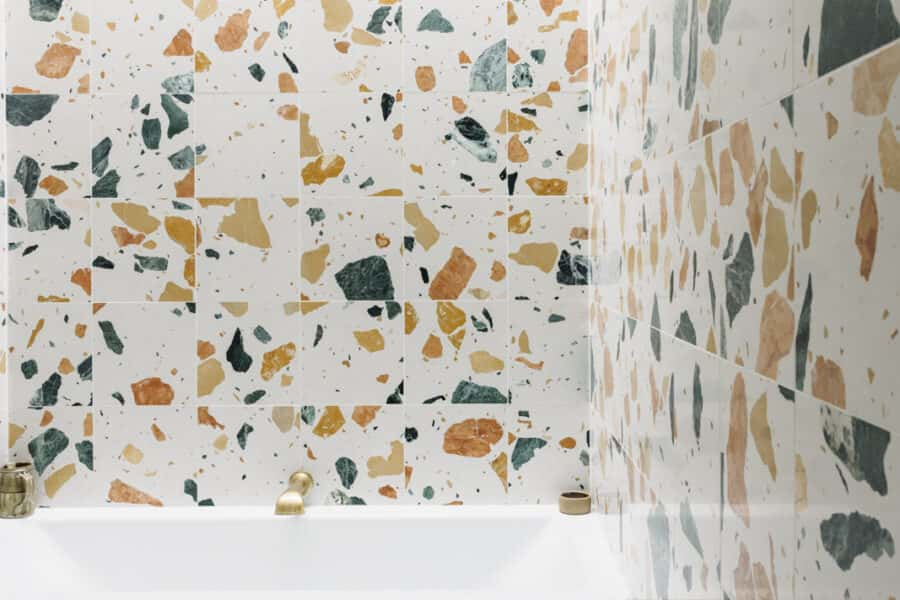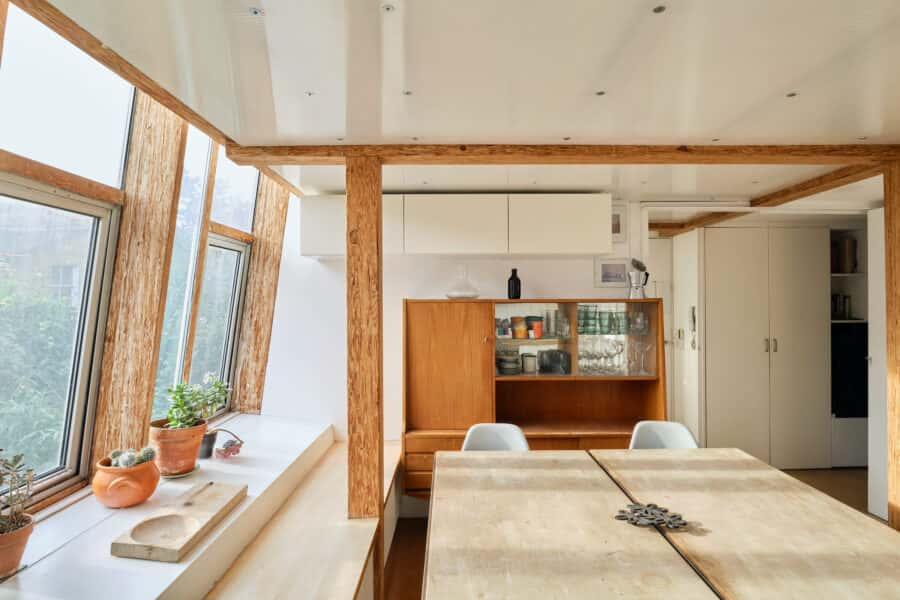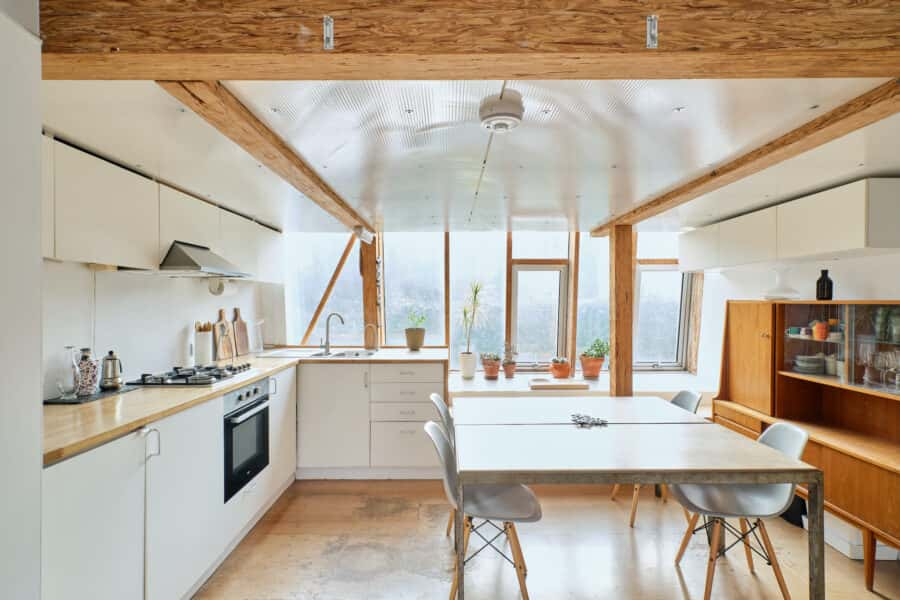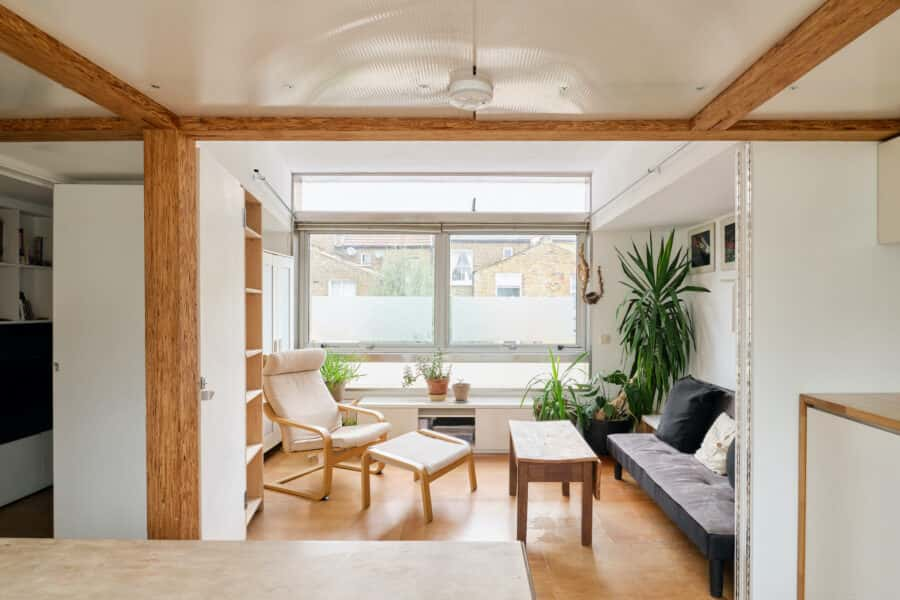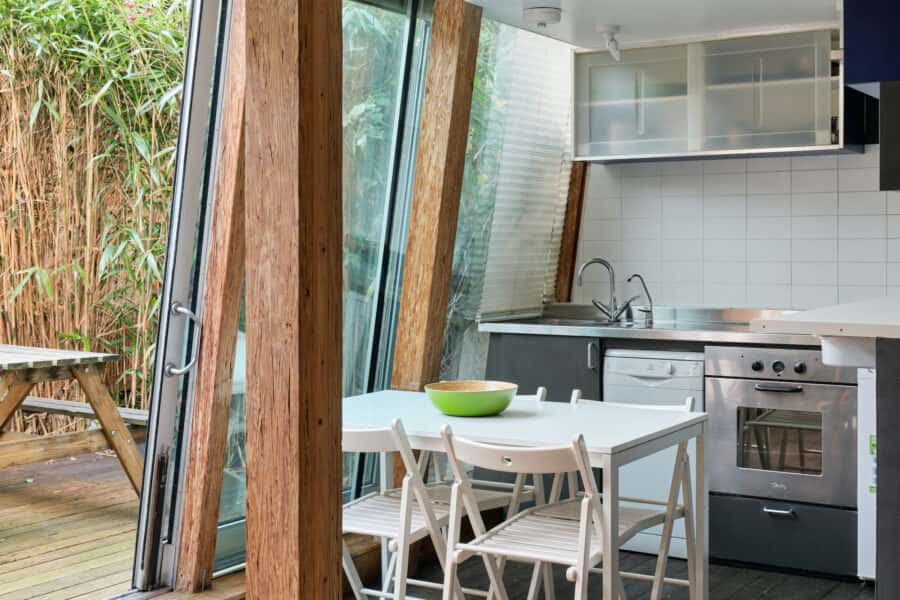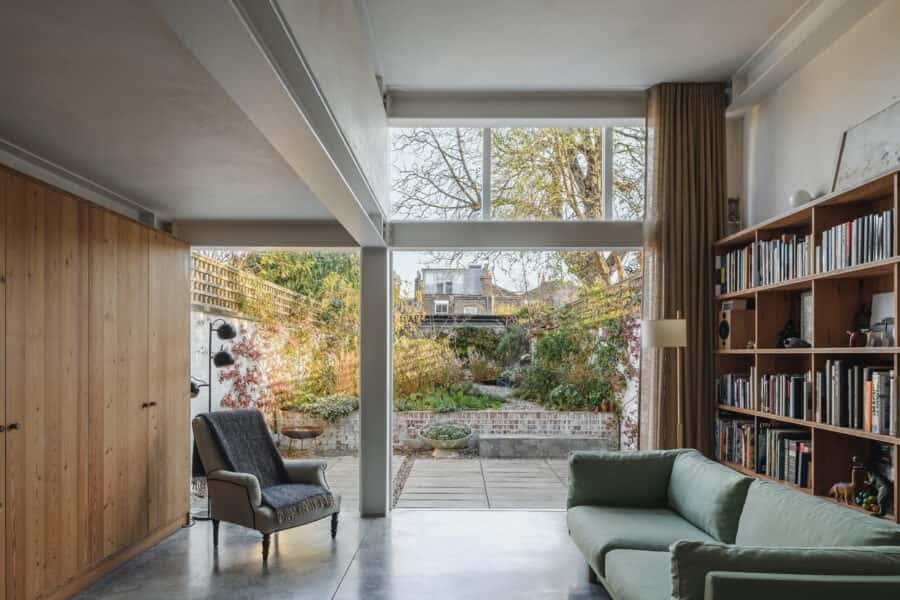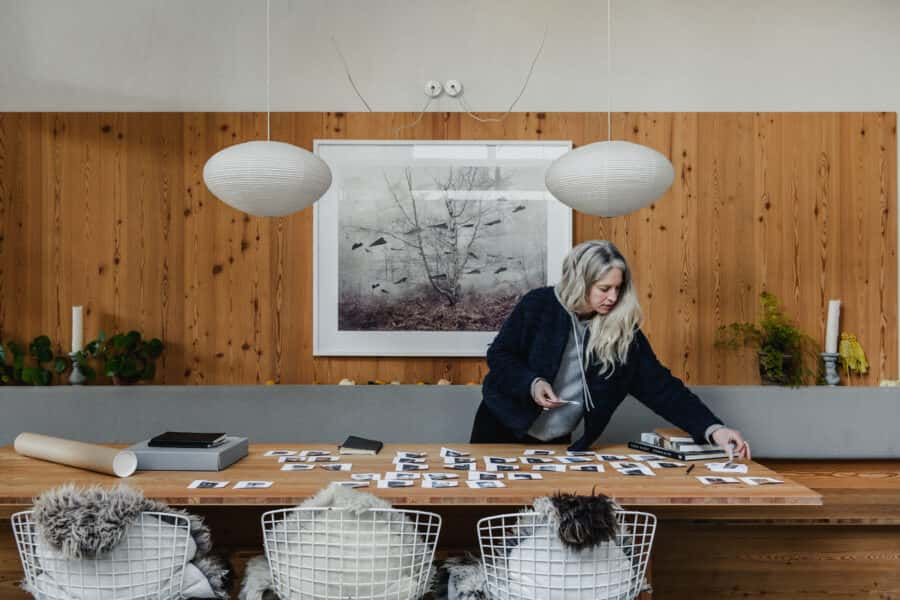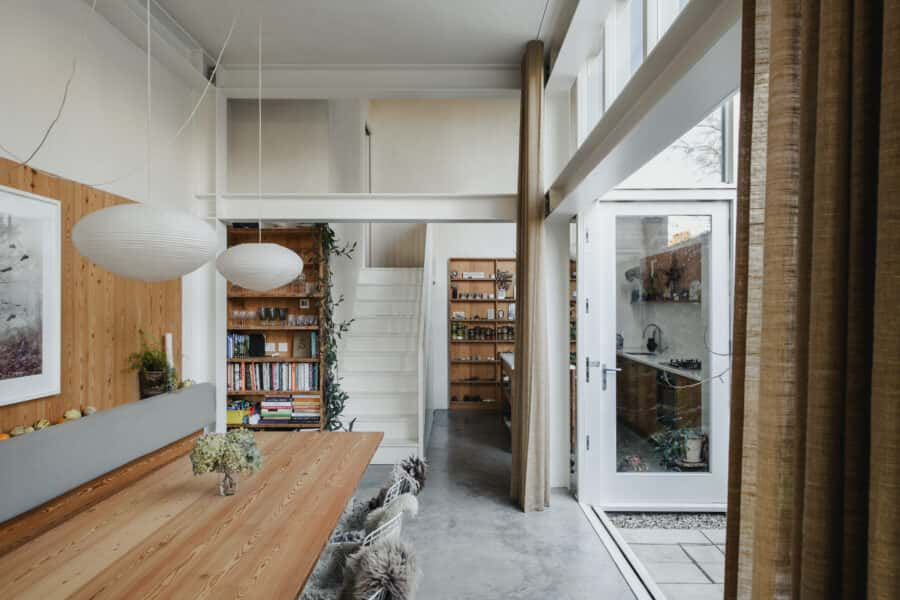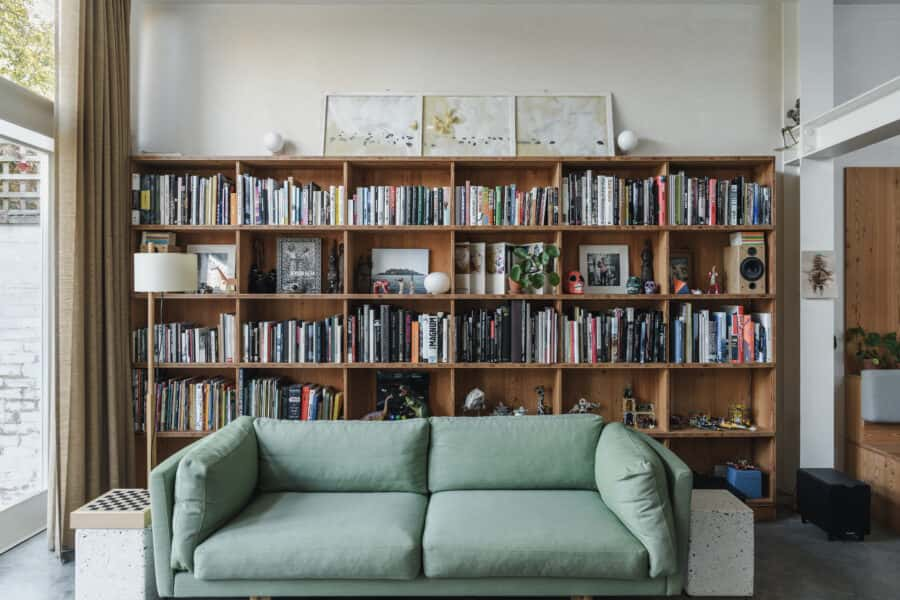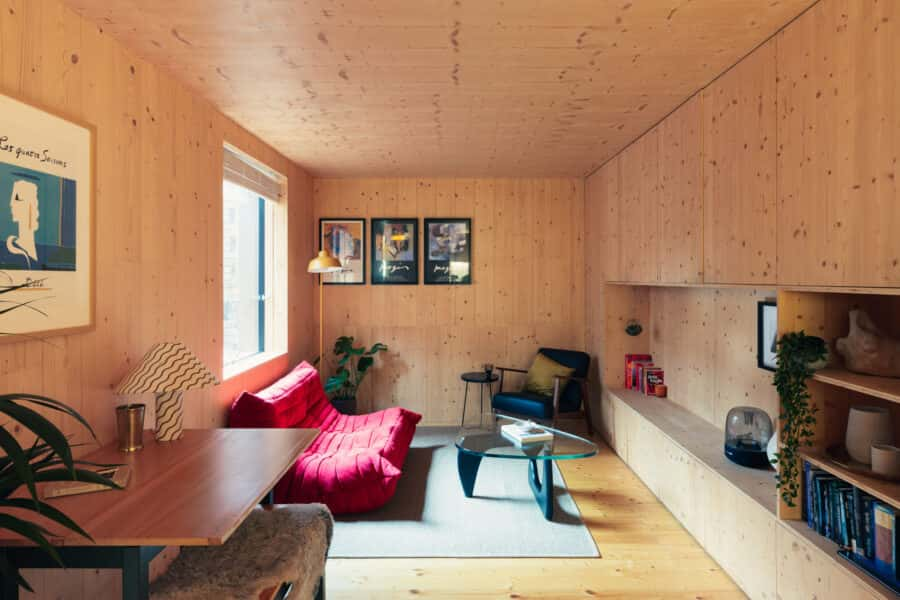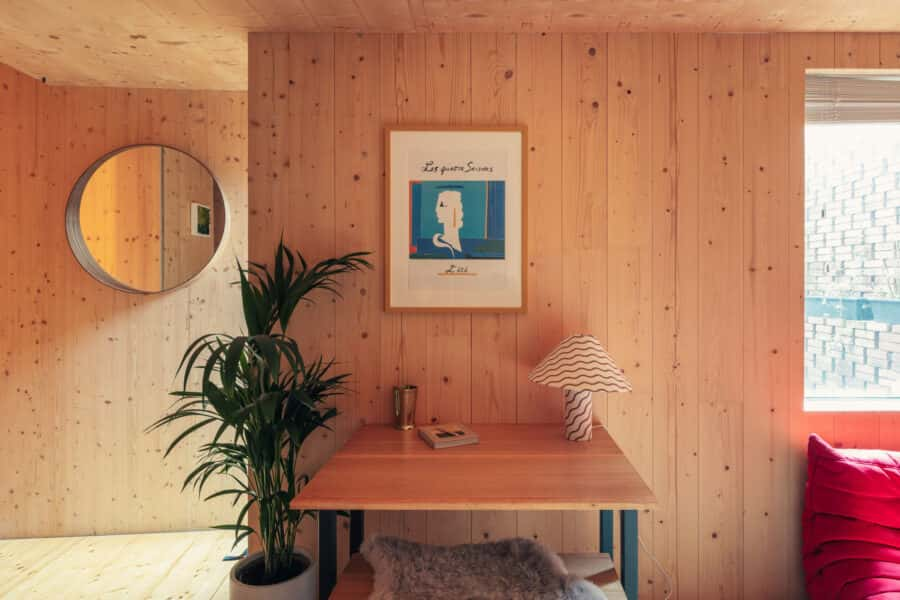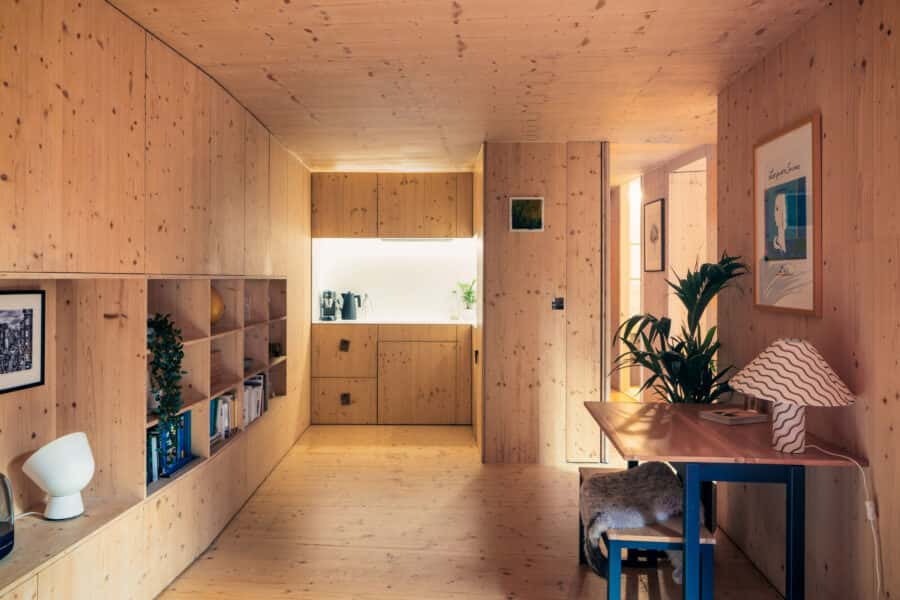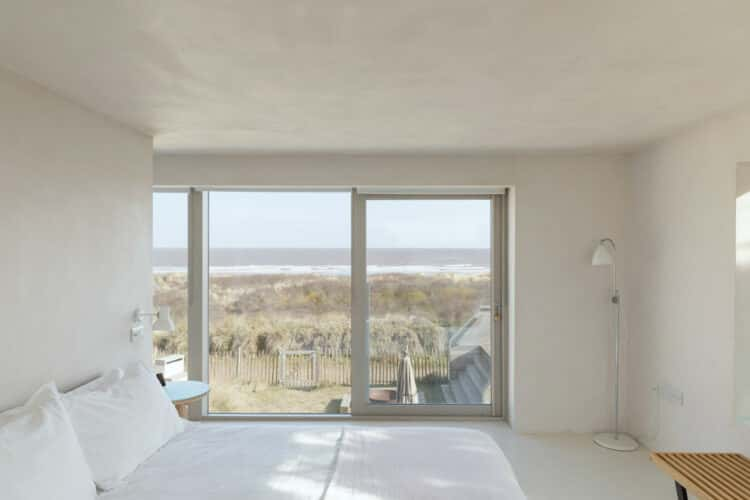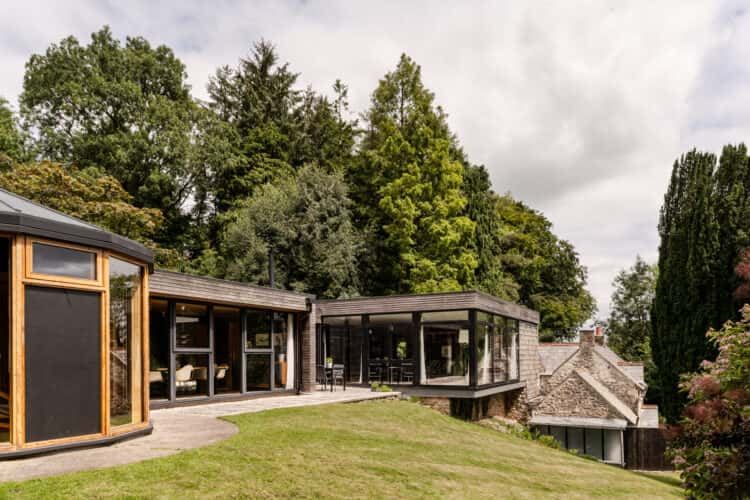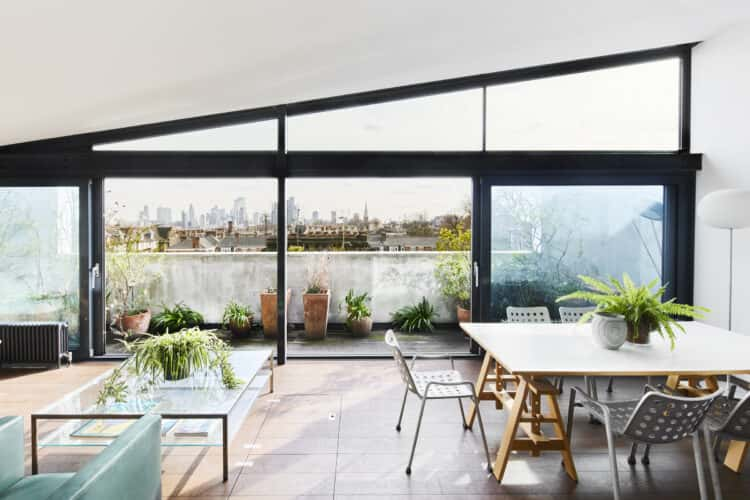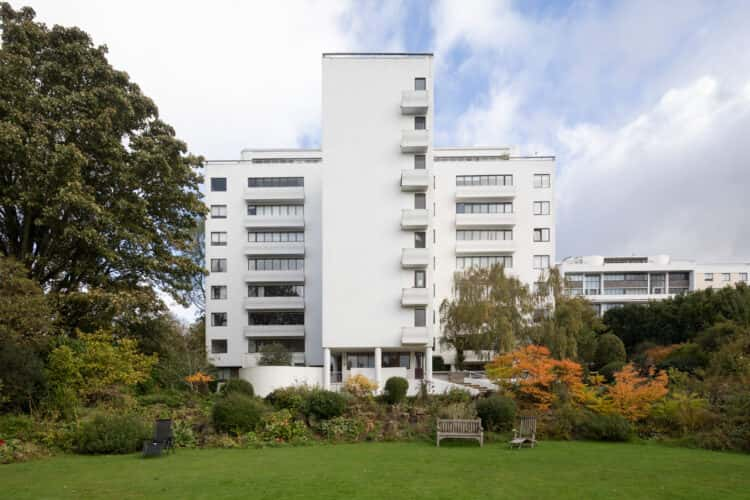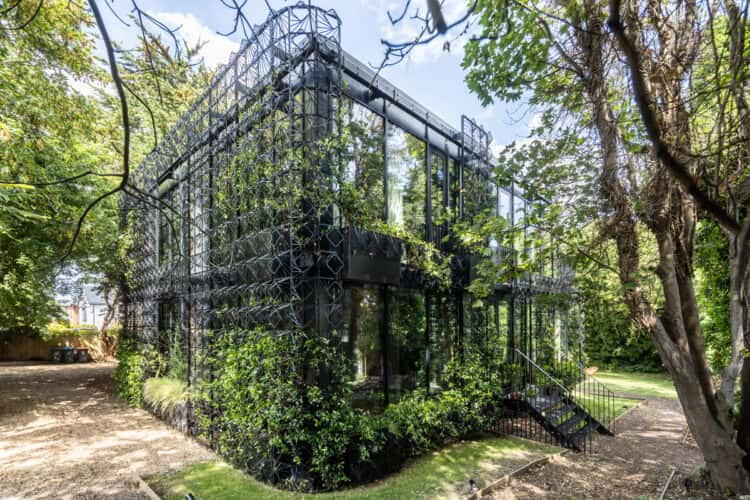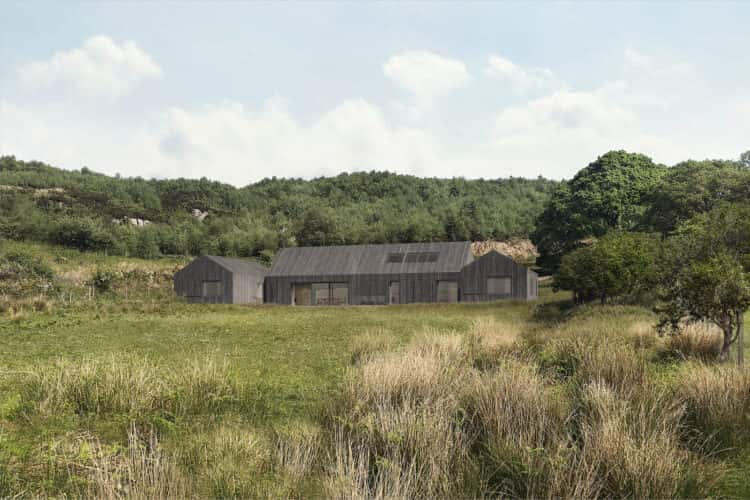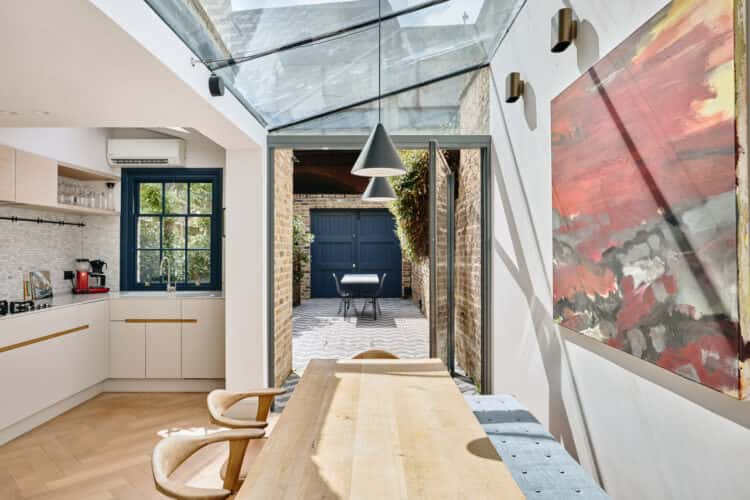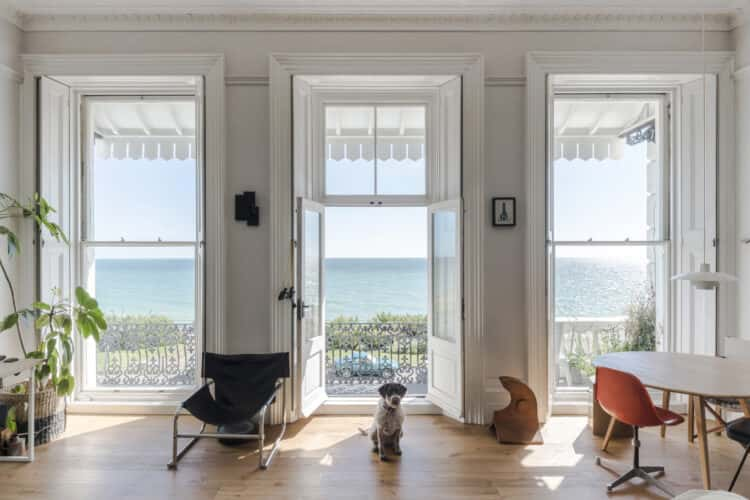Palette Cleanser: six homes with inspiring materials
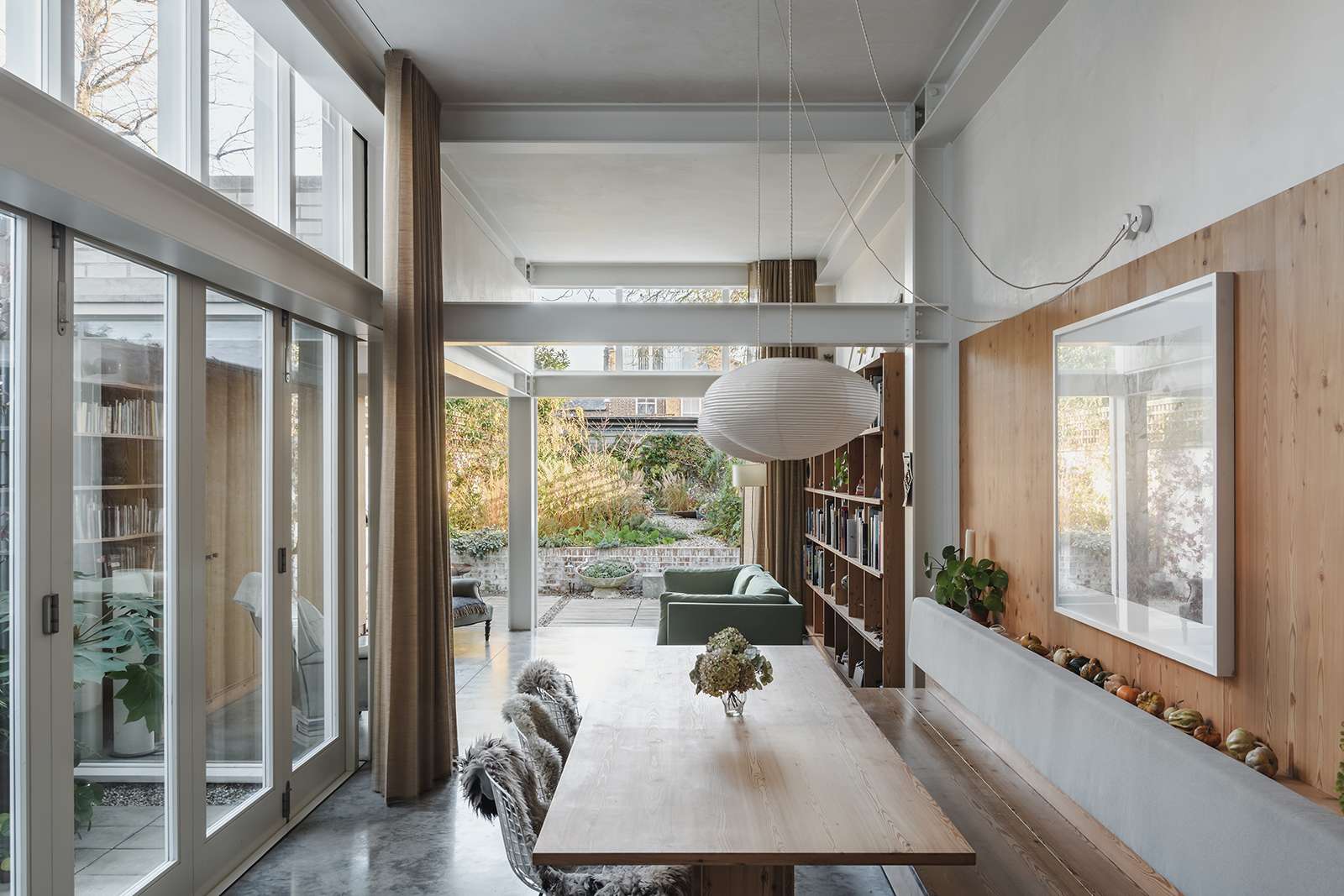
Whether it be an interior clad top to bottom in timber or one where many textures sit together, materials really set the tone for a home. Some soften or bring in a much-needed tactile element to a space, while others might amp up the industrial essence of a building. Here, we’re highlighting six homes with inspiring materials, from a self-designed live/work space with a natural palette to a photographer’s brutalist-inspired concrete home.
Designer Daniel Sanderson’s hand-crafted house in Stoke Newington
Designed by craftsman Daniel Sanderson, this four-bedroom new build is an ode to his love of both Ettore Sottsass and wood, which is put to playful use. In the kitchen, Douglas fir beams frame the space, while solid-oak cabinets and a splashback of thin wooden louvres sit beneath. “I never throw a piece of wood away,” Daniel explained while giving us a tour. “The remaining timber from the kitchen has been used all over the home and to make the furniture.” The joinery, all of which is hand-made, also provides a counterpoint to the exposed brick surfaces. “I was aware that the interior could be quite stark with the dark bricks,” Daniel says, “so I wanted to create some warmth with the timber.”
Burnham Road, Leigh-on-Sea, Essex
The best thing about a seaside home is, of course, its proximity to the water. But, the reason for its inclusion here is, in fact, the warm coastal light that makes this four-bedroom house in Leigh-on-Sea in Essex shine bright. It has a soft, almost filmic quality, and pours into every room, soothing the industrial material palette: exposed brickwork, steel beams and concrete floors. Aside from the occasional splash of blue – a playful nod to the coastal location, perhaps – the home is cast in a calm neutrals, so all eyes are on the honesty of the materials. We like what we can see.
Designers Max Lamb and Gemma Holt’s live/work space in Wood Green
Designer Max Lamb is known for his experimental approach to materials, and the live/work space he shares with his partner, the jeweller Gemma Holt, is proof. There are floors and ceilings made from robust slabs of walnut-coloured cork, which was designed by Herzog de Mueron and Ai Weiwei for the 2012 Serpentine Gallery Pavilion; the kitchen constitutes a floor-to-ceiling run of units made from reclaimed iroko; and the bathroom is entirely clad in a speckled engineered marble, which was the prototype for Max’s hugely successful ‘Marmoreal’ collection for Dzek. “My design world is very material driven,” Max told us when we visited. “I’m very critical of interior design and the fact that many material choices are based on aesthetic rather than on narrative or geography.”
Whatcotts Yard, London N16
This extraordinary home promises its residents the feeling of being up in the trees. This is partly due to its three-storey structure, but also because of its characterful exposed timber beams. With its golden tones and intricate patterns, the honey-hued wood is a delight, contrasting beautifully with the clean white walls. There’s also an abundance of glazing: the entirety of the south-facing wall is glass, meaning the space is flooded with sunlight on a cloud-free day. Now, let’s step outside. The sustainably minded building has been constructed using old bricks and granite sets, giving it green credentials too. There’s little need to wonder why it won a RIBA award.
Photographer Jackie Dewe Mathews’ home in Peckham
Photographer Jackie Dewe Mathews’ renovated house in Peckham proves that industrial materials can look just as good within a traditional Victorian townhouse as a converted warehouse. Conceived by architect Hugh Strange, the palette consists of white-painted steel beams and brutalist-inspired concrete floors, which are juxtaposed with tactile wood and beautifully plastered walls. Despite their industrial tone, the steels create a surprising sense of warmth and intimacy, since they run across the living room at a much lower height than the ceilings. “What is interesting about the design process is that you choose the materials having no idea about how they are going to make the space feel,” said Jackie. “When everything was finally assembled, the space felt so warm, spacious and even cosy. I was delighted.”
Spruce Apartments III, Barrett’s Grove, London N16
This one-bedroom flat has a treehouse-like quality thanks to the cross-laminated timber (CLT) that runs up and down every inch of its walls, floors and ceilings. The result is a tactile, cocooning space, although there is more to this home than simply aesthetics. In fact, the CLT is central to the building’s structural integrity, taking the place of concrete or steel and greatly reducing its carbon impact by doing away with the need for additional materials such as plasterboard or skirting. Another benefit is that the use of a single material gives the illusion that the space is larger than its actual 43sq m. Clever all round.
